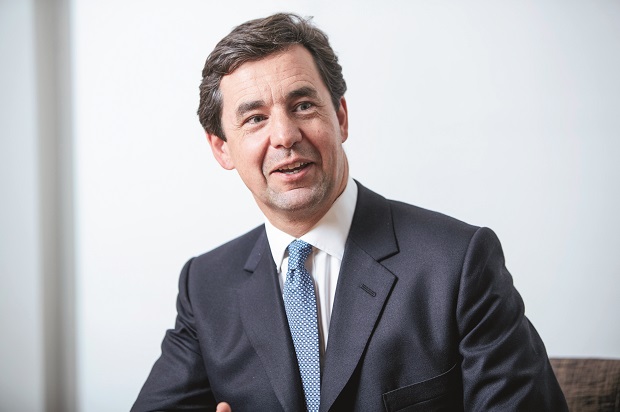
Two reasons for post-COP26 optimism
With many left feeling discouraged in the wake of the recent COP26 agreement, Schroders' CEO, Peter Harrison, calls for the investment industry to seize the opportunity and step up.
With an agreement in Glasgow signed – and facing a mixed reaction - it is worth pausing to consider some the detail of the common ground found during the two weeks of COP26.
The primary focus is rightly on simple carbon emissions reduction. But there were two other developments which give particular cause for hope: on natural capital and carbon markets.
Natural capital as a tool in the battle against climate change
The emergence of natural capital as an investible asset is a powerful new tool in the climate battle.
The concept dates back decades. Amid the energy crisis of 1973, economist Ernest Friedrich Schumacher made first mention of “natural capital”, expressing the need to treat resources as non-renewable capital rather than expendable income.
But it is only today, amid a fresh energy crisis and a worsening climate emergency, that its potential to combat global warming is being more widely understood.
Most attention has been on how the world reduces emissions - from heavy industry, farming or domestic heating. The role nature can play has been less appreciated. Sir David Attenborough encapsulated the opportunity ahead of COP: “Nature has extraordinary powers to lock up carbon dioxide, to provide clean air and water, to help protect from flooding and extreme weather and to provide the food which sustains us.”
Asset managers can be the catalyst for change
However, nature’s raw potential can only be harnessed if its true value is recognised and accounted for. Asset managers can be the catalyst for change.
The Natural Capital Investment Alliance launched this week by His Royal Highness the Prince of Wales is an important step on this journey. The 15 members of this group all have, or will have, investment vehicles that help channel capital into nature-focused projects.
This is what is needed. To date, philanthropy has been the driving force: donations are deployed to protect NGO projects in South American rainforests or Asian marine reserves. But their reach is limited. Imagine what more could be done if those projects could attract not just generous donors but investors too. If even a fraction of the $100 trillion-plus managed by asset managers were channelled into natural capital markets, it would make a powerful contribution to mitigation efforts.
For it to work, investors need viable and sustainable returns. In this regard, there is a second development of note. Carbon offset credits are increasingly being used by companies and governments to mitigate their footprint. The value of traded credits will likely surge to $1bn this year.
The need for global governance
More work is needed to unify these markets behind a consistent set of values and standards. That work is happening, led by Mark Carney, UN Special Envoy for Climate Action and Finance, and former Governor of the Bank of England. His Taskforce on Scaling Voluntary Carbon Markets has begun to establish global governance for the market. The City of London with its global position can and should become a facilitator in creating robust carbon markets.
Such markets would help breathe life into the pricing of natural capital. Projects that enhance biodiversity and benefit local communities – not just absorbing more carbon – deserve a higher grade of carbon credit. Demand for premium credits will likely grow and the potential for returns will become clearer. We must not forget, after all, that our primary responsibility is to savers. The money in their pensions must be invested to achieve the best outcome, for their future and for society’s.
Furthermore, the investor who can identify areas with the greatest potential to become valuable, biodiverse projects can gain an investment edge. For example, certain tracts of land that could be identified as most suitable for rewilding or preserving because of particular flora or local topography. Or there could be opportunities to amalgamate pieces of land to create wildlife corridors. For our part, we have worked with Natural Capital Research, an Oxford University spin-off, to develop this capability.
If sufficient scale can be achieved with the creation of natural capital markets, it will attract yet more investment. Support from the asset management sector is key. Just as it has been in the agreement on deforestation, where responsible financial institutions have pledged to root out damaging forestry from supply chains among the companies they invest in and lend to.
None of these measures will solve the climate crisis alone. Investment in nature and carbon credits cannot be a substitute for the rapid and deep reduction needed from each company’s value-chain emissions. They can, however, help increase the likelihood that the agreements made in Paris, and hopefully Glasgow, are met.
A quiet revolution is underway
I am buoyed by the potential of free markets to offer a step change in nature conservation. Too often capitalism is the object of climate debate criticism, when its raw power could and should be targeted on the unifying aim of capping temperatures at 1.5c above pre-industrial levels. This is just one example of how the industry can move beyond profit.
A quiet revolution in environmental investment is underway. It will make a difference.



